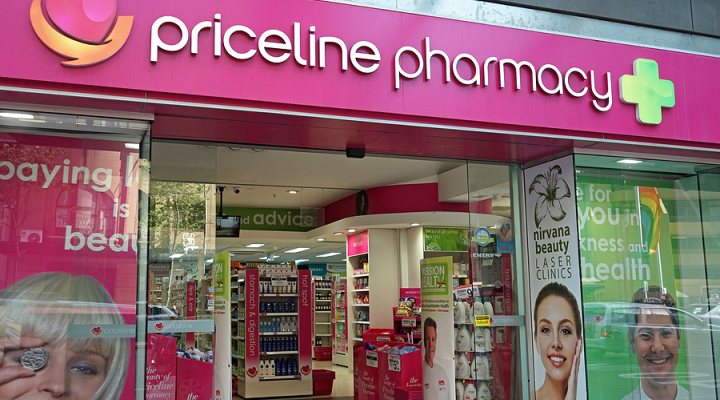The last few months have seen some significant changes in Australia’s pharmacy retail sector, with Wesfarmers’ acquisition of Priceline finalised in March, and Chemist Warehouse’s launch of an online marketplace earlier this month. Additionally, Chemist Warehouse unveiled its store-within-a-store luxe beauty concept Ultra Beauty in June, indicating a much larger focus on the beauty sector and potentially a more competitive environment for both retailers in the future. “Chemist Warehous
rehouse will be looking to use its market power with consumers and suppliers to maximise the opportunity in all segments of the broader market,” Craig Flanders, co-founder and managing director of Spinach Advertising, told Inside Retail.
“Health and beauty is just the one that is a focus of late, [but] the fact it’s created a sub-brand and a more conducive retail environment to make these brands feel at home indicates it thinks there is a big prize [in beauty].”
“It can only be viewed as serious competition for Priceline and other larger retailers – not necessarily pharmacy brands – that carry a range in the health and beauty segment, Myer for example.”
However, Queensland University of Technology professor Gary Mortimer believes Chemist Warehouse will face some challenges as it moves into the beauty space.
“Priceline is very much centred around beauty,” Mortimer told Inside Retail.
“It’s clearly positioned itself around cosmetics, beauty and skincare products, whereas Chemist Warehouse has traditionally positioned itself around being a low-cost value retailer. Moving into the beauty space is a risky move, because it may dilute the offering and confuse its audience.”
There’s an opportunity there, however, Mortimer noted. According to Mordor Intelligence, the health and beauty sector in Australia was valued at $5.5 billion (US$3.73 billion) in 2020, and is expected to grow at a compound annual growth rate of 3.87 per cent until 2026.
Even if Chemist Warehouse, through its marketplace offering or physical Ultra Beauty locations, captures a larger part of the market than it currently holds, it could be worth millions in revenue each year.
Marketplace moves
Brian Walker, founder of industry consulting firm Retail Doctor Group, also added that the sector’s continued push online, particularly into the marketplace space, would create a very competitive landscape.
“They say that around 65 per cent of all e-commerce spend is done in a marketplace, and when it comes to Priceline, they’re probably already competing online in some form like a marketplace,” Walker told Inside Retail.
“I don’t think Chemist Warehouse’s move into marketplace is especially unique, and it’s just a matter of time before Priceline does it itself.
“What gets interesting is that Wesfarmers already has a marketplace, and it’s entirely conceivable that there could eventually be a bigger Wesfarmers marketplace, where it sells cosmetics through its Priceline brand, hardware through its Bunnings brand, and so forth.”
Ultimately, Walker said, whoever has the algorithms, the scale, and the segmentation abilities is going to win the battle.
“The question now is whether Priceline is going to keep to their focus on differentiation and rely on their stores, or take on a similar, potent omnichannel approach to Chemist Warehouse. We’ll see.”
For how dramatic the lead-up was, Wesfarmers’ acquisition of Priceline-owner Australian Pharmaceutical Industries (API) has largely come and gone without much fanfare.
During its full-year earnings and recent AGM, Wesfarmers noted that its new health division, which was built off of the purchase of API, is positioned well to deliver long-term growth and is now being integrated into the wider Wesfarmers business.

